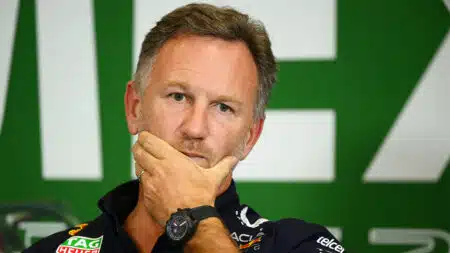“So I’m looking for that kind of desire. It’s a different world now but I want drivers who want it very, very much. We have two at Red Bull like that with Ricciardo and Max – ‘I want to be in the car, I want to beat everyone.’ I would say that on the present F1 grid that maybe only half the drivers have this approach.”
That philosophy translated into an uncompromising approach to driver evaluation. Marko believed that prolonging underperformance only created false hope, and that it was better to make hard decisions early than allow doubts to linger.
As he saw it, a driver capable of thriving at the front of Formula 1 had to cope with scrutiny, internal competition and public criticism long before they ever reached a top team.
Many of the drivers who passed through the Red Bull system recognised that clarity, even when they found it brutal.
For Marko, those reactions only reinforced his belief in the system. The environment was meant to be difficult. Those who needed time were unlikely, in his view, to succeed in a team built to fight for championships.
Alex Albon later admitted that the speed of his promotion – and the lack of tolerance that followed – left him struggling to find his footing.
“Once you’re in that top team, the spotlight gets put on you far, far more than what it was like at Toro Rosso,” Albon, who lasted 26 races at Red Bull, told the High Performance Podcast.
“The first race that I went to, it was in Belgium, and the attention around this whole seat swap was massive and every mistake, everything you do, gets criticised. It’s quite a hot seat – the seat that I was in, it’s been moved around a fair bit – so that was one of the main things.”

Perez often welcomed Marko’s blunt comments
Sergio Perez, a race winner before joining Red Bull, found himself subjected to pointed criticism when his performances dipped alongside Verstappen.
Marko once controversially suggested Pérez’s inconsistency was mental, saying it came from being South American, rather than technical, a remark that drew widespread backlash and later prompted an apology.
And yet, for all the hardness, there was undeniable loyalty. Marko would go to extraordinary lengths for those he believed in, something that reflected in the relationships he had with some of his drivers.
Vettel and Verstappen both benefited from his support, treated like projects worth protecting at all costs.
If a driver was backed by Marko, he was backed completely. At least until the day that backing stopped when his expectations were not met.
That is the kind of duality that defined him: a man as quick to cut a driver loose as he was to defend them publicly.
His relationships ran on instinct, leading to messy and unpredictable situations, but his method also produced champions.
Junior programme success
Perhaps Marko’s most enduring contribution is the Red Bull Junior Team, the driver development system that operated less like a high-stakes proving ground. Born out of his RSM Marko team, it was an engine for discovering talent, and discarding anyone who could not keep up.
The results speak for themselves. Vettel was the programme’s first great advertisement, a precocious force who justified Marko’s faith with four titles in a row.

Vettel was Marko’s big success story
Grand Prix Photo
Verstappen was its second great masterstroke: a teenager recruited against the wishes of more cautious voices, fast-tracked to Formula 1, and immediately allowed to take the risks others feared.
Without Marko’s fingerprints, the Verstappen dynasty might have looked very different.
In between came Ricciardo, Gasly, Carlos Sainz, Alex Albon and many more; world champions, race winners and podium finishers.
Critics argued the programme has wasted potential and ruined the careers of promising drivers. Supporters countered that it also revealed it. Both statements are true.
The system was and continues to be flawed, but it has produced more elite drivers than any other modern academy, with Marko as its architect.
The politics of power
Marko’s greatest asset inside Red Bull was always his brutal honesty. His political strength came from not playing politics in the traditional sense. He didn’t deal in the half-truths common in a championship where appearances often matter more than decisions.
His power was an inheritance from Mateschitz, and that made him untouchable. Until it didn’t.
After Mateschitz’s death in 2022, the company’s internal structure became less decentralised, more corporate, and more hierarchical.

Marko wasn’t a good fit with the new structure
Grand Prix Photo
The old Austrian centre of gravity weakened as the Thai-majority ownership became more present.
As Horner’s exit showed earlier this year, executives with no history in the paddock gained more say in how the team was run. Inside that reshaping, Marko’s old-school style became an awkward fit.
The tensions that had been manageable under Mateschitz – the friction with Horner, the differing philosophies on driver management, the occasional public barbs that complicated the team’s messaging – slowly became destabilising.
Once Red Bull’s competitive decline in late 2024 and 2025 added pressure, the political situation changed, as evidenced by Horner’s exit.
Marko’s departure is another logical endpoint of that transformation.
As Verstappen’s turnaround in the second half of 2025 shows, Red Bull is not collapsing despite the political turmoil of the past year. It remains a top-tier force with enormous resources, a strong technical department and a driver at the absolute peak of his abilities.
But it is changing, and change always carries risk.





